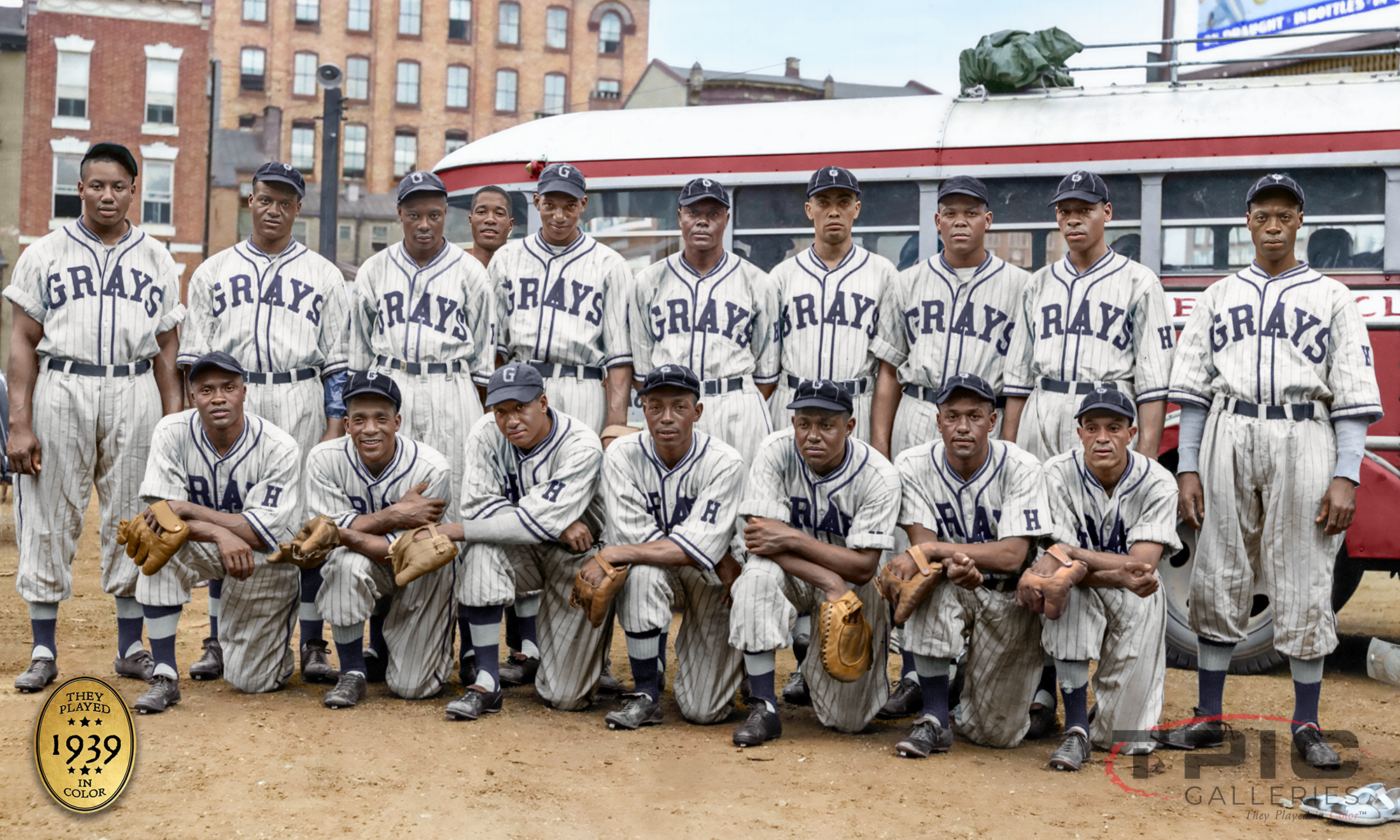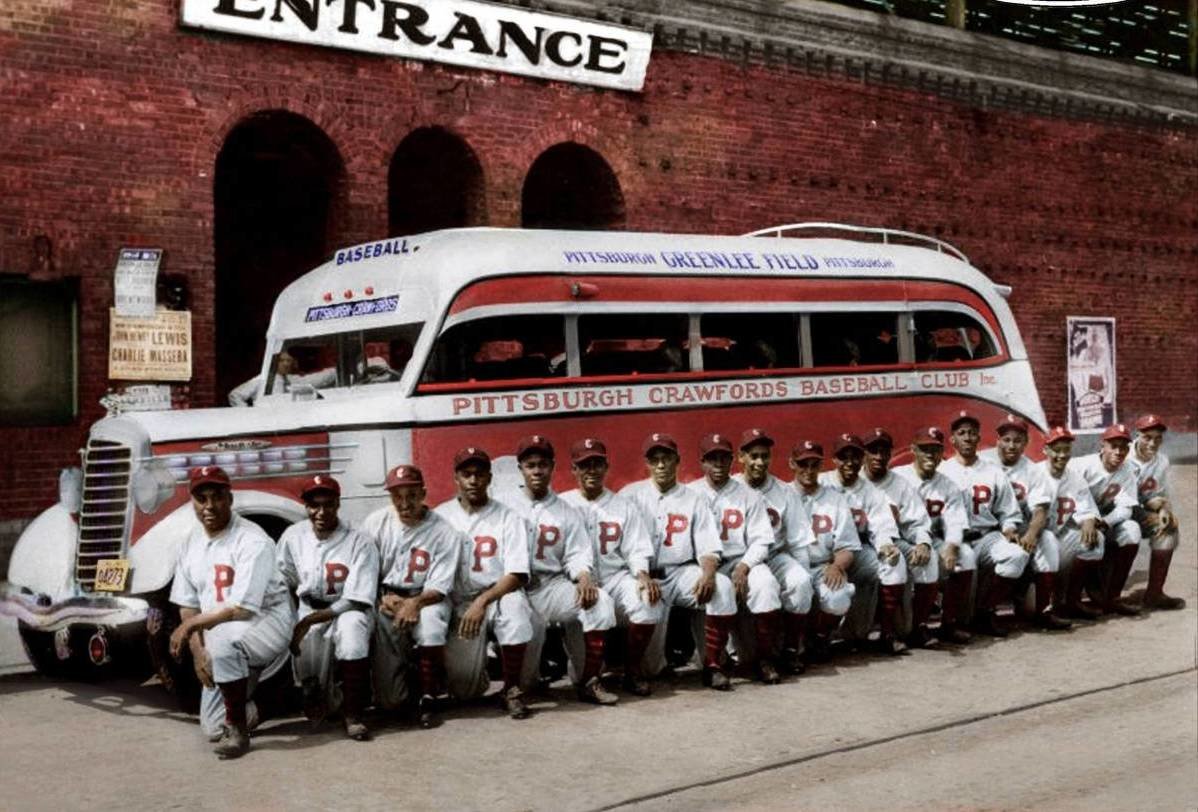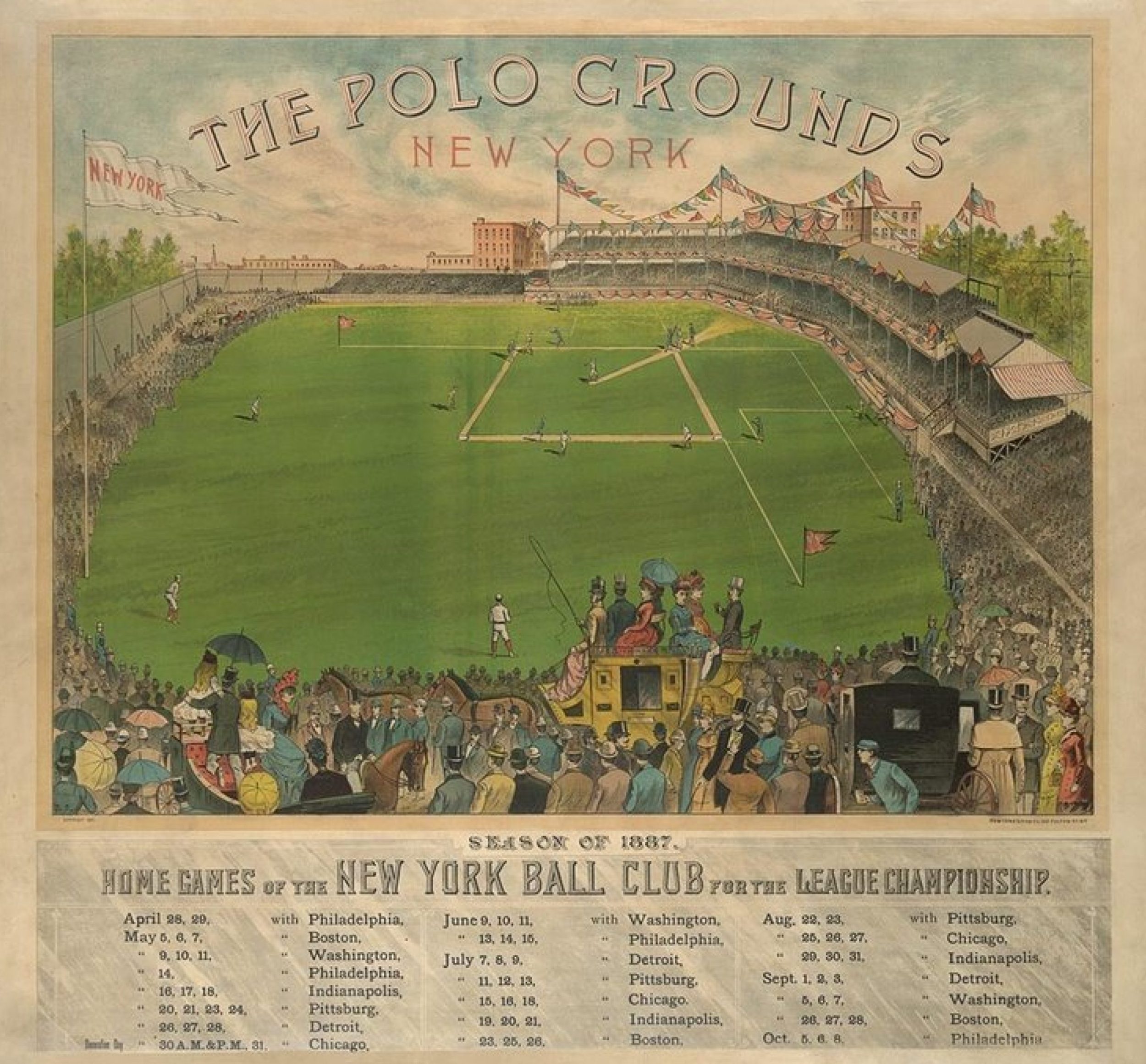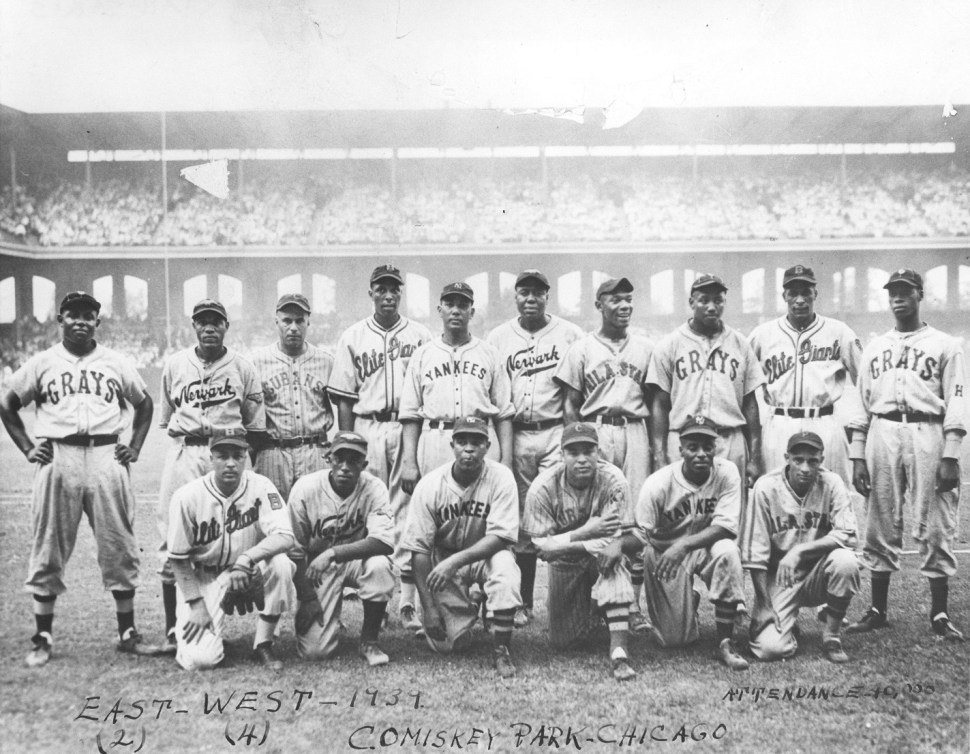Scroll Down to Read Today’s Essay
Subscribe to Baseball History Comes Alive for automatic updates. As a Free Bonus, you’ll get instant access to my Special Report: Gary’s Handy Dandy World Series Reference Guide!
BLACK HISTORY MONTH TRIVIA, Part Two
Today, in our month-long recognition of Black History Month, we’ll continue with Vince Jankoski’s baseball trivia questions. As I mentioned last week, I’ll post seven trivia questions each Thursday, one for each day of the week. I’ll continue for the entire month. Test your knowledge before checking out the answers below.
In today’s featured photo, we see a great photo from the 1939 East-West Negro League All-Star game, played at Chicago’s Comiskey Park. Here’s a few words about the game:
There were two Negro League All-Star games in 1939. Pictured here is the East team from the first game, played at Comiskey Park on August 6, 1939, in front of an estimated 40,000 fans. The West team won the game, 4-2. The winning pitcher was Ted “Doubleduty” Radcliffe, and the loser was Roy Partlow. The West team hit two home runs, the first by Neal Robinson of the Memphis Red Sox, and the second by Ted Strong of the Homestead Grays.

Here’s a wonderful quote from Buck O’Neil that shows just how important the East-West All-Star game was to the African-American community:
“The game was something very special. It was the greatest idea Gus Greenlee ever had, because it made black people feel involved in baseball like they’d never been before. While the big leagues left the choice of players up to the sportswriters, Gus left it up to the fans …. That was a pretty important thing for black people to do in those days, to be able to vote, even if it was just for ballplayers, and they sent in thousands of ballots …. Right away it was clear that our game meant a lot more than the big league game. Theirs was, and is, more or less an exhibition. But for black folks, the East-West Game was a matter of racial pride. Black people came from all over Chicago every year — that’s why we outdrew the big-league game some years, because we almost always had 50,000 people, and almost all of them were black people …. The weekend was always a party. All the hotels on the South Side were filled. All the big nightclubs were hopping.”
Vince Jankoski’s Black History Trivial Questions for February 8-14
February 8: Who was the only African-American to start at four different positions in World Series games for the New York Yankees?
February 9: What was the first team to start three African-Americans in the outfield in a World Series game?
February 10: Who was the first African-American player to play in the World Series with two different teams?
February 11: Who was the first African-American to homer in a World Series game?
February 12: Who was the first African-American to homer for a National League team in the World Series?
February 13: The New York Yankees were notoriously late to integration. Who was the first African-American to homer for the Yankees in a World Series game?
February 14: Who was the first African-American Yankee to hit a World Series home run who was in the starting line-up when the game began?

Answers
February 8: Elston Howard started in both left and right field in the 1955 series, playing in all seven games. In 1956, he started in left field in Game Seven. In 1957, he was in the starting line-up at 1st base in Game Four. He was back in left field in 1958. By 1960 he had supplanted Yogi Berra as the starting catcher.
February 9: In Game Two of the 1958 Series, the Milwaukee Braves started an outfield of Hank Aaron in RF, Billy Bruton in CF, and Wes Covington in LF. They combined to reach base ten times in 14 plate appearances. The Braves won the game 13-5, but lost the Series to the Yankees in seven games.
February 10: Al Smith. Smith was in the outfield for the 1954 Cleveland Indians and 1959 Chicago White Sox. He was on the losing side both times.
February 11: In the third inning of Game Four of the 1948 Series Larry Doby homered off the Braves’ Johnny Sain. It was the margin of victory in a 2-1 Cleveland win. The Indians would go on to win the Series in six games.
February 12: In 1949, Roy Campenella homered off Joe Page in the ninth inning of GameThree. The Dodgers lost the game 4-3 and the Series in five games.
February 13: Elston Howard went long ball in the ninth inning of Game One of the 1960 fall classic. Howard pinch hit for Ryne Duren and homered off the Pirates’ Roy Face. The Yankees still lost the game 6-4 and the Series in seven games. It was the Yankees’ sixty-fourth World Series game after Jackie Robinson broke the color line.
February 14: Willie Randolph. Randolph homered in the six inning of the opening contest in 1977 off the Dodgers’ Don Sutton. The solo shot tied the score. The Yanks went on to win the game 4-3 as well as the Series in 6 games. Reggie Jackson would hit five dingers that series, but Randolph beat him to the honor of being the first African-American starter to homer for the Yanks in a World Series.
Gary Livacari
Subscribe to our website, Baseball History Comes Alive with over 1400 fully categorized baseball essays and photo galleries, now surpassing the one million hits mark with 1,152,000 hits and over 950 subscribers: https://wp.me/P7a04E-2he


